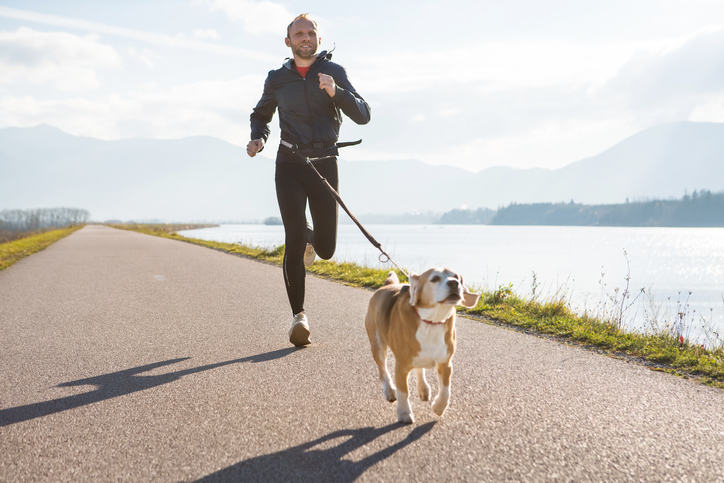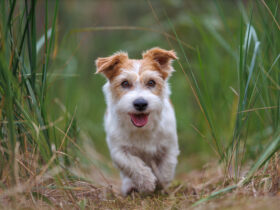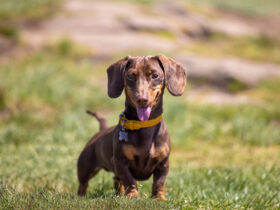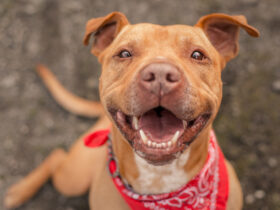With the sun out and the warm weather officially here to stay, you might be thinking it’s time to lace up those running shoes and take to the streets. You don’t have to leave your pup at home though! Not only is exercise great for your physical and mental health, it’s also incredibly beneficial for furry friends too.
They may look adorable napping on the couch all day, but your dog needs regular exercise just like humans do. Not only will jogging with your dog help maintain healthy body weight, muscle retention, and heart health, but it will also reduce the chances of destructive behavior such as barking and chewing on those new expensive running shoes.
Whether you are curious about how to start running with your dog or are a seasoned pro looking to perfect your skills, these tips will help you make sure your miles this summer don’t go to the dogs.
Consider Your Dog’s Needs
The first thing any pet parent needs to think about when teaching their dog to run is what types of physical activity is best suited for their breed. Running isn’t the best exercise for all canines. Dogs such as Golden Retrievers and Collies are great long-distance running companions because of their large bodies, ability to follow commands, and friendly demeanor. In contrast, breeds with slender builds such as Greyhounds and Whippets are better equipped for short distances and big bursts of energy as opposed to a slow and steady 10-miler.
If you are the proud parent of a brachycephalic, or short-nosed dog, it is best to avoid strenuous exercise altogether. Along with short-legged breeds, pups like Pugs and Bulldogs tend to lack endurance and the physical requirements necessary for extensive exercise. We recommend leaving these little guys at home when you head out the door for a run. Instead, try a nice walk around the block or a game of fetch – your dog will thank you!
By researching your dog’s breed tendencies before hitting the pavement, you can assure yourself your dog is enjoying it as much as you are. Still not sure? Your veterinarian can also be a great resource to determine if your dog is built for running.
Get the Right Tools
Running with the wrong kind of leash is a lot like running with your shoes untied – it is less a question of if you will trip, but when. Making sure you have the right type of gear for you and your dog will keep everyone safe and sound all summer long.
A hands-free dog walking belt along with a collar or harness that doesn’t restrict your dog’s movement is a great place to start. These types of leashes are especially practical for pet parents who are new to running with their dogs, since it frees up your hands in case of an emergency.
A collapsible water bowl, clean-up bags, and a handful of treats to reward good behavior, help round out this practical running kit. By thinking ahead and planning for you and your dog’s needs, you will be off and running in no time!
Be Patient
We all know the saying, “you have to walk before you can run,” and nothing is more true when it comes to exercising with your canine companion. If your pup has not quite mastered properly walking on their leash, it is best to hold off on taking them out for a run. Be patient and take your time teaching them how to stay to one side, maintain speed, and avoid distractions before taking it to the next level.
Properly teaching your dog how to run next to you and listen to commands significantly decreases the chance of any issues or injury. Remember, it is a marathon, not a sprint, so take your time.
Check the Weather
That sunshine may be calling your name, but it isn’t always ideal weather conditions for your dog. On those hot summer days, try running in the early mornings or late evenings to protect your dog from overheating or heat stroke. If midday runs are your thing though, opt for somewhere in the shade, like a forest trail, to protect your pup’s sensitive paws from hot surfaces.
Don’t forget to also check for signs of fatigue or overheating. Sluggish movement and excessive panting are key indicators that your pooch may need a second to catch their breath.
Start Slow
Now that you have spent the time to leash train your dog, what’s next? Similar to humans, it is important to ease into any new exercise. You want to be sure you don’t have your pooch do too much too fast. It’s important to put together a training plan that makes a conscious effort to start slow.
You can make this transition by saving the long run for another day and instead plan a few short jogs throughout the week. This approach will allow your dog to become acclimated to the activity and help prepare for those more demanding runs. It will also give you a chance to see if your dog is comfortable running with you and if any further training is needed.
Over time, you will be able to increase your speed and mileage so that you both can progress at a safe, healthy pace.
Stay Healthy
This may seem like a no-brainer, but exercise needs to be fueled by proper nutrition. If you’re regularly going on runs with your pup, make sure to feed a high-quality food, like Bil-Jac Dry Dog Food so your dog can get all the essential nutrients to keep him fueled for the next run. Also with all the running, maintaining and supporting healthy joints is not only important for you, but also for your dog as well. Make exercise enjoyable and nurture your dog’s physical health by adding Bil-Jac BREAKTHRU® Joint Health Formula to their diet. Calcium, vitamin D, and protein help support healthy joints while probiotics help support healthy immune function.
Being proactive about your dog’s health and wellness is just one of the many ways to ensure you and your running partner enjoy those miles together for years to come. Want to learn more tips and other ways you can help support your four-legged friend? Join our Best Friends Club today to receive our exclusive email newsletter full of interesting articles and members-only discounts on Bil-Jac Dog Food, Treats, and other products.







Leave a Reply